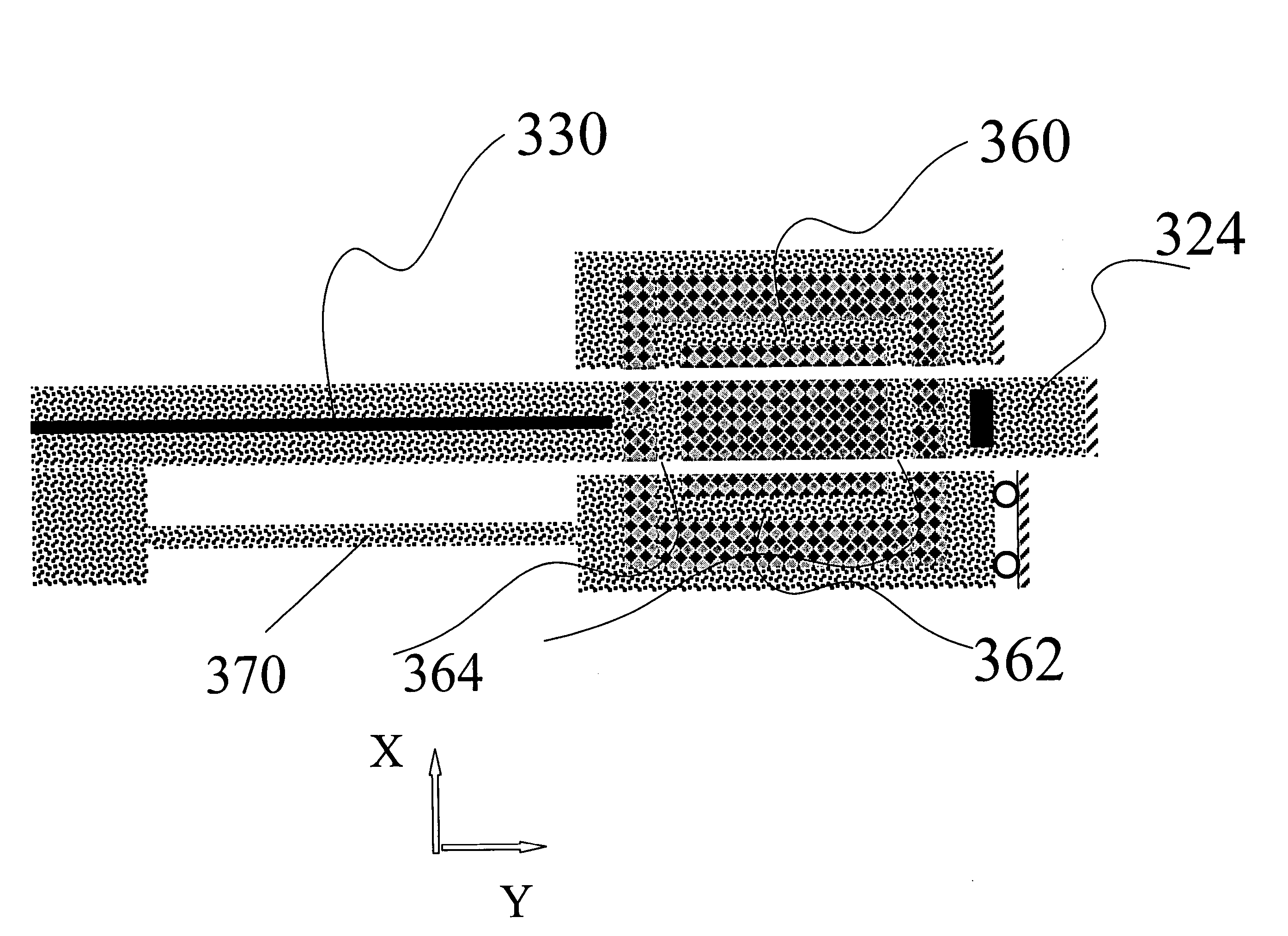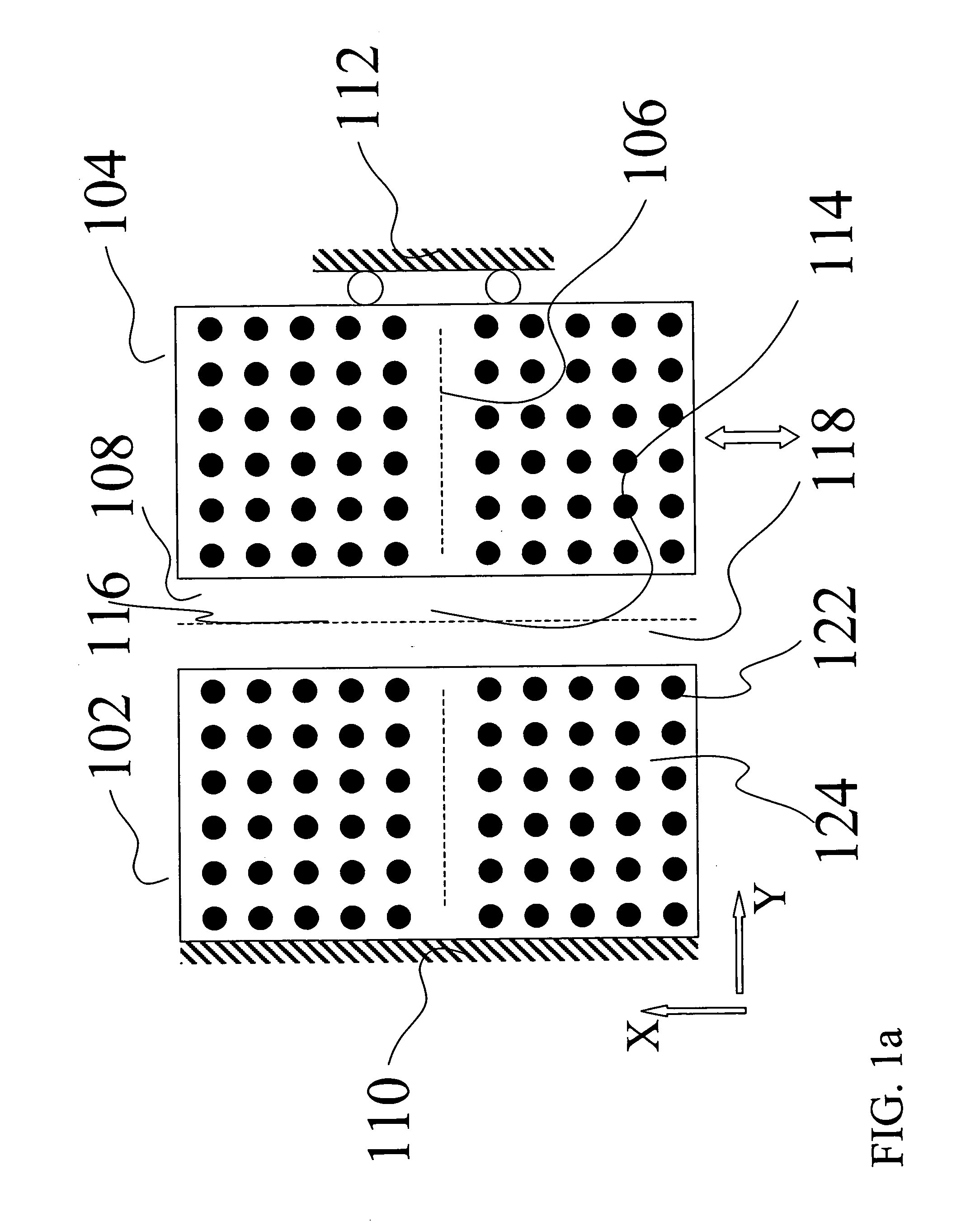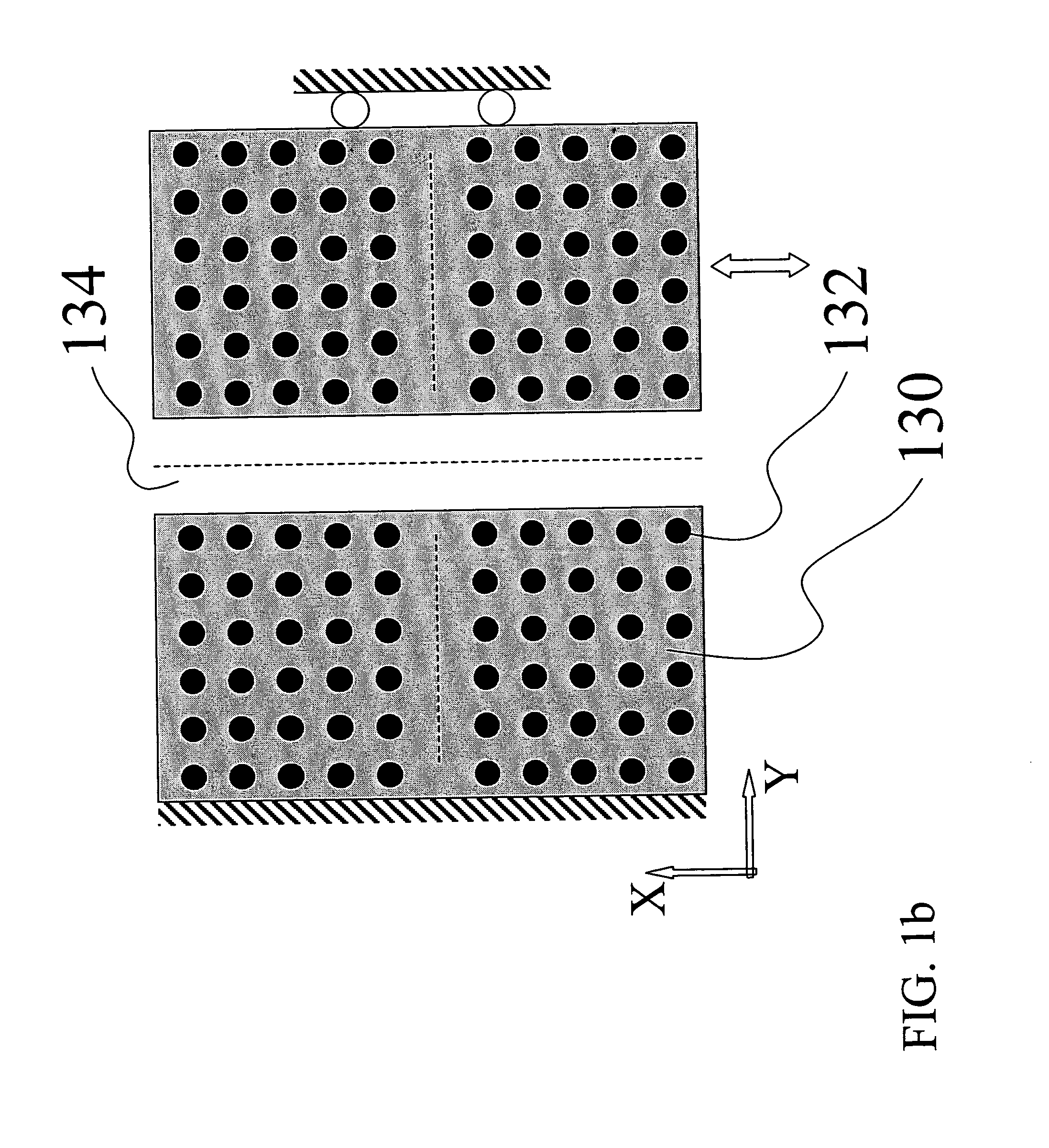Displacement sensor based on photonic crystal waveguides
- Summary
- Abstract
- Description
- Claims
- Application Information
AI Technical Summary
Benefits of technology
Problems solved by technology
Method used
Image
Examples
example
Numerical Simulations
[0036] A numerical simulation of the field distribution inside a two-dimensional PC structure as in FIG. 1a and FIG. 3 is used to demonstrate the performance of our PCWG displacement sensor. We use a numerical code based on the Multifilament Current Model [Y. Leviatan and A. Boag, IEEE Trans. Antennas Prop., vol. 35, 1119 (1987)] to find the energy distribution and intensity exiting each PCWG for different displacements. Dielectric posts 122 are assumed to be cylinders with diameter 1.2 μm and a relative dielectric constant εr =8.41, separated by air and positioned on a square periodic lattice with a unit cell of 4 μm by 4 μm. All waveguides are W1-type. The light used has a 9.02 μm wavelength which can be generated using a CO2 laser, and which is within the bandgap of this PC structure. The numerical code computes the full solution of the propagation / scattering problem, based on the algorithm provided in Y. Leviatan and A. Boag, above. We use it to compute the...
PUM
 Login to View More
Login to View More Abstract
Description
Claims
Application Information
 Login to View More
Login to View More - R&D
- Intellectual Property
- Life Sciences
- Materials
- Tech Scout
- Unparalleled Data Quality
- Higher Quality Content
- 60% Fewer Hallucinations
Browse by: Latest US Patents, China's latest patents, Technical Efficacy Thesaurus, Application Domain, Technology Topic, Popular Technical Reports.
© 2025 PatSnap. All rights reserved.Legal|Privacy policy|Modern Slavery Act Transparency Statement|Sitemap|About US| Contact US: help@patsnap.com



